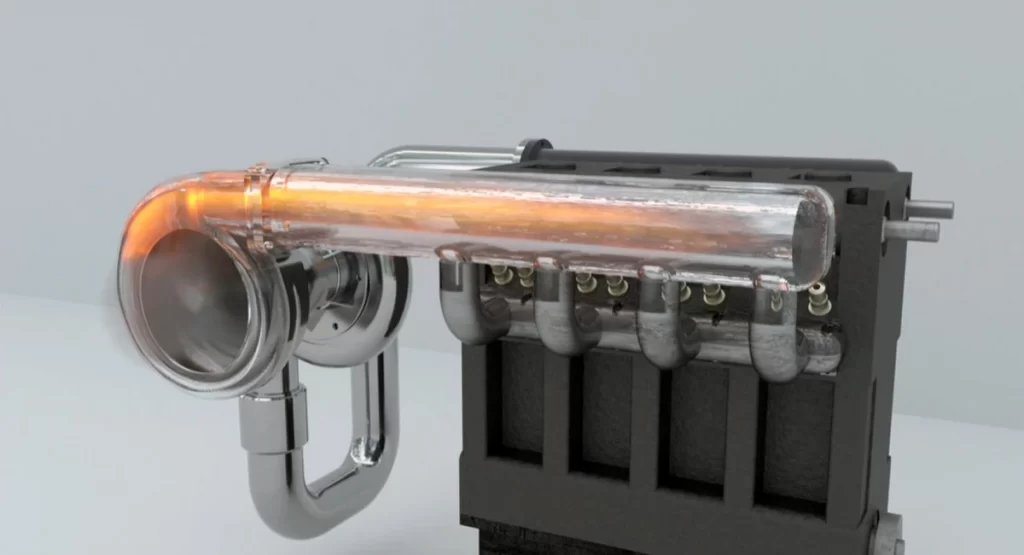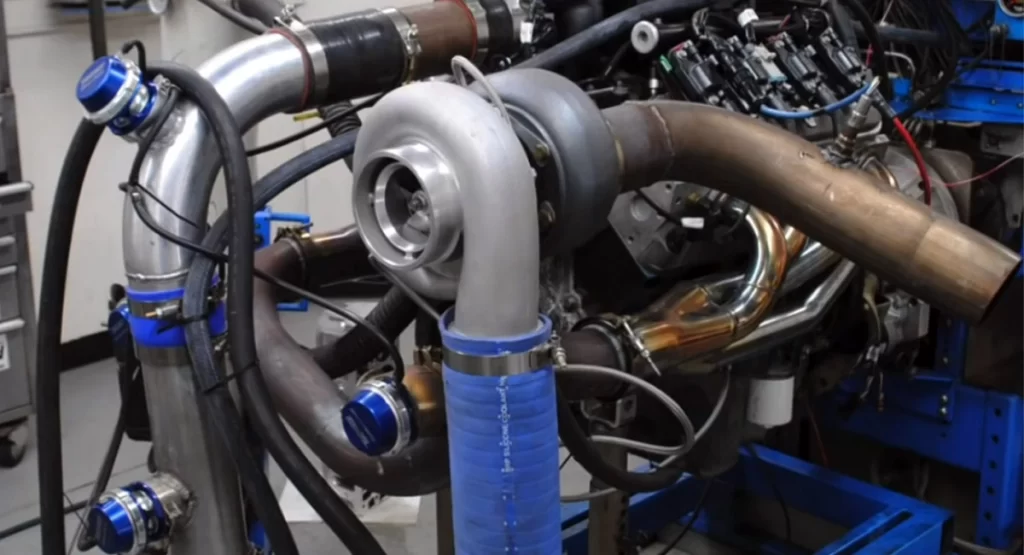The T66 turbo has a 66mm x 91mm wheel, can flow 72lbs/min, has a max of 720hp, and is sold by Turbonetic. The T series turbos are more race-oriented than T3/T4 turbos (they have a high p/r threshold), and the T66 has a 66mm x 91mm wheel, can flow 72 lbs/min, and has a max of 720hp.
This article is all about the T66 turbo charger and almost everything you need to know when using turbo chargers for your car.
What really is a turbo?
The turbo is a snail-shaped tube that directs exhaust gases to a turbine and compressor. The turbine is spun by the gases, and the compressor is spun by the turbine.
This suctions far more air into the engine than a non-turbo – or naturally-aspirated – engine, allowing for a higher fuel concentration to be used. This causes a larger explosion in the cylinder, and the larger the explosion, the more power is produced.
What are the other advantages of T66 turbos and others?
Turbos not only boost output, but they also improve an engine’s overall strength, especially at low revs. This is especially helpful in small petrol engines, which, in the absence of a turbocharger, are notoriously low on torque at high revs.
In contrast, low-revving naturally-aspirated diesel engines produce a large amount of torque. As a result of the addition of a turbocharger, turbodiesels feel more powerful at high speeds, such as 50 mph in top gear.

The exhaust pipes of turbocharged vehicles are also quieter. The turbo reduces the amount of gas that comes out of the exhaust, making the car quieter than a non-turbo vehicle.
When you let off the gas pedal, you might hear a ‘chuff.’ That’s the “wastegate,” a device that removes excess gas from the turbo when it’s not required.
What are the disadvantages of turbochargers?
Turbochargers work by rotating an impeller to pull new air through the vehicle’s air filter and raise the atmospheric pressure in the combustion chamber. Turbocharger systems for cars are sometimes highly expensive, and their correct operation often necessitates professional installation and tuning of the vehicle. However, these aren’t the only drawbacks of turbochargers.
Overheating.
When a turbocharger is used without an intercooler, the engine compartment can reach dangerously high temperatures.
Overheating breakdowns, the melting of critical plastic engine components, and fires can result from this additional heat.
Intercoolers help to alleviate this problem, but they are an additional expense to the system. Turbochargers and intercoolers are not always sold as a complete package.
Invalidation of the Warranty
Any vehicle still covered by the manufacturer’s warranty may have its warranty void if an aftermarket turbocharger is installed. Paying off road racing vehicles typically do not have turbochargers because they are regarded as specialized equipment. Damage to the turbocharger will void your warranty and necessitate you paying for repairs out of your own pocket.
Insurance
Insuring a car with a turbocharger is significantly more expensive than insuring a car without one. For teen drivers who own turbocharged vehicles, the difference can be as much as double the standard insurance premium.
There are also multiple turbocharged engines.
In twin-turbo or bi-turbo systems, there are two distinct turbochargers that operate either sequentially or simultaneously. Both turbochargers are fed half of the engine’s exhaust in parallel configurations.
At low engine speeds, one turbocharger operates, while the other is activated at a specified speed or load level.
It is possible to reduce turbo lag even further by using sequential turbochargers, but this requires the installation of a complex system of pipes to feed both turbochargers efficiently.
At low speeds, a tiny turbocharger is used, while a larger one is used at higher speeds. The “2-stage” moniker comes from the fact that the boost pressure generated by one turbocharger is doubled by two.
Because the exhaust gas distribution is continuously changeable, it is possible to gradually switch from employing a small turbocharger to a large one.
Diesel engines are the primary use for dual turbochargers.
At 1,500–1,700 revolutions per minute, only the smaller turbocharger in the Opel bi-turbo diesel functions to provide high torque. During the mid-range, the smaller turbocharger compresses the air, which is then further compressed by the larger turbocharger.
Each turbocharger’s exhaust flow is controlled by a bypass valve. Only the larger turbocharger engages at higher rpms (between 2,500 and 3,000).
T76 turbo specs.
- Intake :3.95 inch
- Outlet: 2.5 inch
- Turbine Wheel diameter 72.78mm /64.20mm
- Exhaust trim: .81ar
- Turbine flange type: t4 flange
- Downpipe flange type : 3 inch v band flange
- Cooling type: oil cooled only
- Horsepower rating: 1000+ hp
- Compressor trim: .80 ar
- Compressor Wheel diameter 76.80mm / 102.35mm

What does “t3t4” stand for?
T3/T4 turbochargers combine a T3 turbine section with a T4 compressor section to create a hybrid turbocharger that has the low inertia and quick boost response of a T3 while still providing the high airflow of a T4.
Some related FAQs about T66 turbo and etc.
Which T3 turbo is the tiniest of them all?
A T3 Super 60 Trim compressor powers this turbocharger. Turbonetics’ smallest turbocharger family is the T3. All the way up to a 325 horsepower Super 60, the T3 line-up is perfectly sized for applications under 2 liters.
Definition: What is a 50 turbo?
TRIM values can only range from 0 to 100 and are represented by the numbers 45, 50, 55, etc. Dp and Dg are equivalent when the value is set to 100. Indicative of a big turbine diameter, the TRIM is very huge. A TRIM of 55, compared to a TRIM of 50, provides 10% more caudal. Compressor and turbine wheels both make use of TRIM in the same way.
How can I tell what turbo size I have?
When a turbocharger is installed, its A/R (aspect ratio) is typically the number cast into the exhaust turbine housing to identify the housing’s dimensions, ranging from its intake to its radius around its center. In general, the larger the number, the more spacious the residence will be.
We hope that our explanation provided you with the answer to your question, “T66 Turbo” If you have any additional questions, please leave a comment below, and we will be happy to assist you further. Check out this link for a question for What Does NOS Stand. Thank you very much.
